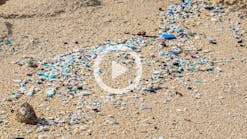EPA Issues Guidance to States to Reduce Harmful PFAS Pollution
The U.S. Environmental Protection Agency (EPA) released a memorandum to states that provides direction on how to use the nation’s bedrock clean water permitting program to protect against per- and polyfluoroalkyl substances (PFAS). The guidance released today, which outlines how states can monitor for PFAS discharges and take steps to reduce them where they are detected, is part of the Agency’s holistic approach to addressing these harmful forever chemicals under EPA’s PFAS Strategic Roadmap.
This action is a critical step in EPA’s efforts to restrict PFAS at their source, which will reduce the levels of PFAS entering wastewater and stormwater systems and ultimately lower people’s exposure to PFAS through swimming, fishing, drinking and other pathways.
“EPA is following through on its commitment to empower states and communities across the nation to address known or suspected discharges of PFAS,” said EPA Assistant Administrator for Water Radhika Fox. “Today’s action builds upon successful and innovative efforts already used by several states to safeguard communities by using our Clean Water Act permitting program to identify and reduce sources of PFAS pollution before they enter our waters.”
The memorandum, Addressing PFAS Discharges in National Pollutant Discharge Elimination System (NPDES) Permits and Through the Pretreatment Program and Monitoring Programs, will align wastewater and stormwater NPDES permits and pretreatment program implementation activities with the goals in EPA’s PFAS Strategic Roadmap. The memo recommends that states use the most current sampling and analysis methods in their NPDES programs to identify known or suspected sources of PFAS and to take actions using their pretreatment and permitting authorities, such as imposing technology-based limits on sources of PFAS discharges. The memo will also help the Agency obtain comprehensive information through monitoring on the sources and quantities of PFAS discharges, informing other EPA efforts to address PFAS.
Several states have already demonstrated the benefits of leveraging their state administered NPDES permit programs to identify and reduce sources of PFAS before these forever chemicals enter treatment facilities and surface waters. Michigan, for example, is partnering with municipal wastewater treatment facilities to develop monitoring approaches to help identify upstream sources of PFAS. The state has been able to leverage that monitoring information to work with industries, such as electroplating companies, to substantially reduce PFAS discharges. North Carolina has also successfully leveraged its NPDES program to develop facility-specific, technology-based effluent limits for known industrial dischargers of PFAS. This memo urges states to replicate these approaches and use others noted in the memo to identify and reduce PFAS discharges.
This memo builds upon the agency’s April 2022 memo to EPA Regions by expanding the audience to states and including new recommendations related to biosolids, permit limits, and coordination across relevant state agencies. The memo provides recommendations to NPDES permit writers and pretreatment coordinators, rooted in the successful use of these tools in several states, on monitoring provisions and analytical methods and the use of pollution prevention and best management practices. These provisions will help reduce PFAS pollution in surface waters as the Agency also works to promulgate effluent guidelines, finalize multi-laboratory validated analytical methods and publish water quality criteria that address PFAS compounds.
Background
PFAS are a large group of chemicals that are used in consumer products and industrial processes. In use since the 1940s, PFAS are resistant to heat, oils, stains, grease and water—properties which contribute to their persistence in the environment.
Anyone discharging wastewater into waters of the United States must obtain a NPDES permit. That permit contains provisions to ensure that pollutants are removed from wastewater discharged directly to rivers or the environment as needed to protect our waters and public health. Many industries discharge to Municipal Wastewater Treatment Plants (WWTPs), which are not designed to remove PFAS, rather than directly to rivers or creeks. Reducing the amount of PFAS that industries send to Municipal WWTPs is an important part of limiting the amount of PFAS released into the environment.
In October 2021, EPA Administrator Michael S. Regan announced the Agency’s PFAS Strategic Roadmap—laying out a whole-of-agency approach to addressing PFAS and delivering tangible public health benefits to all people who are impacted by PFAS pollution. Last month, EPA released its first annual progress report under the Roadmap, highlighting successful actions begun or completed in the first year of implementation and noting critical milestones it will achieve in the next year.






